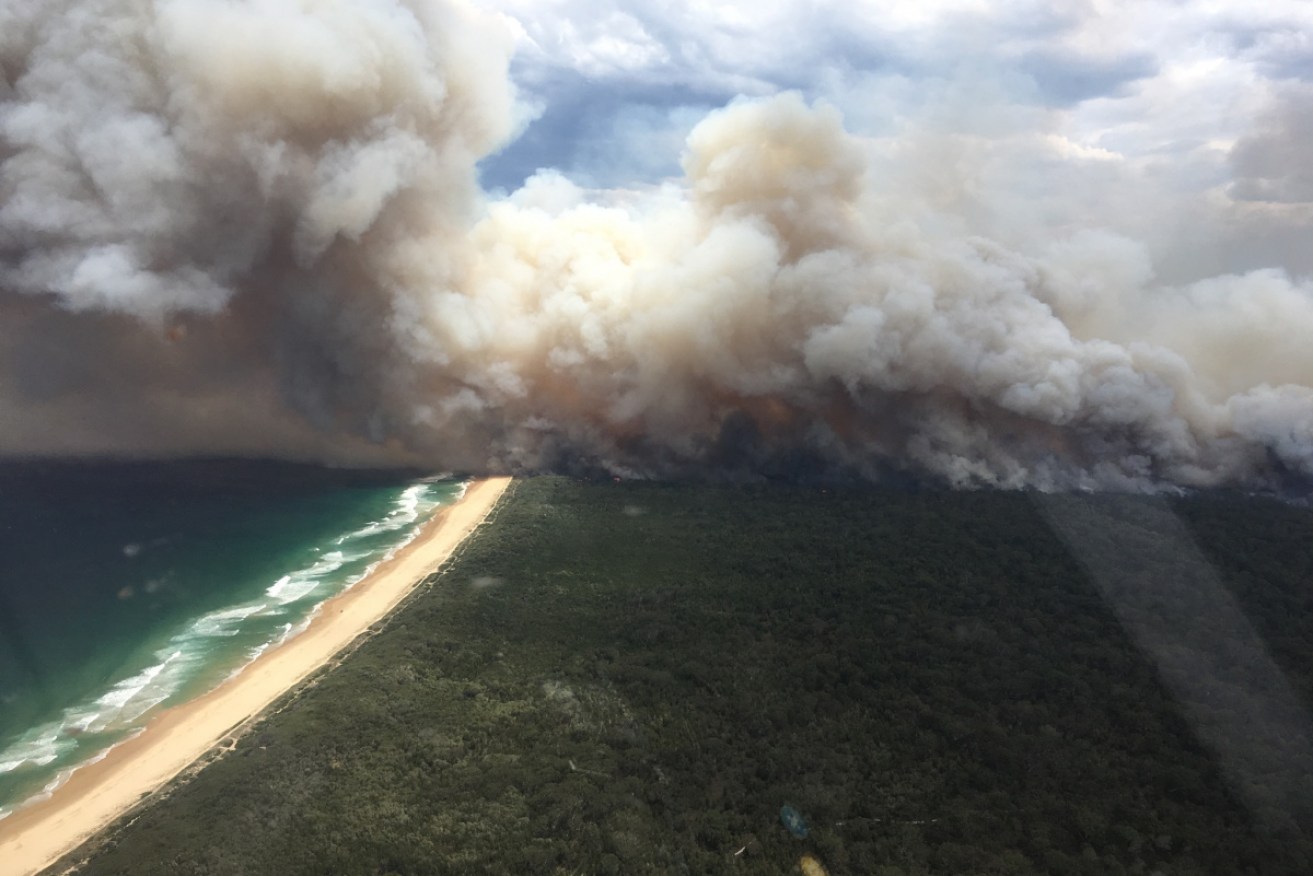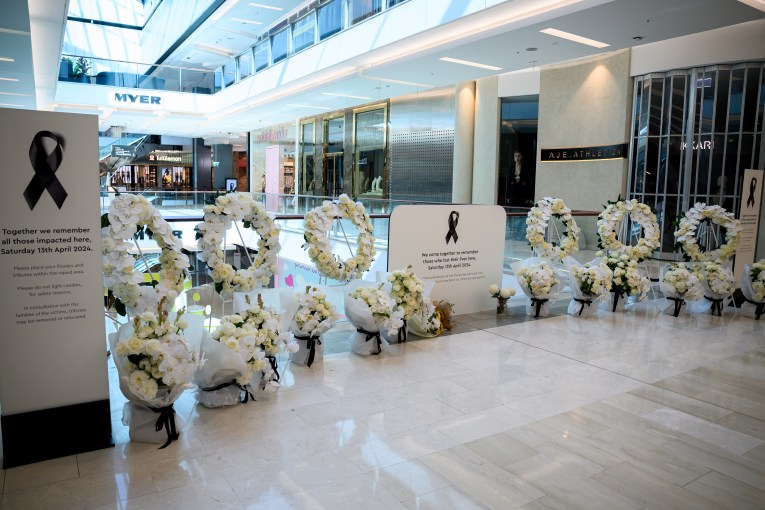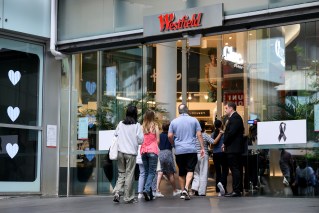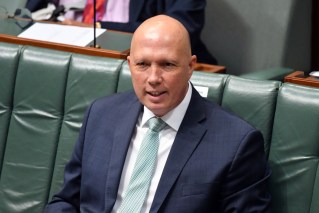Australian bushfires emitted the same level of CO2 as annual global air travel


The full travesty of this year's bushfire season has been revealed in a new report. Photo: Climate Council
Australia’s severe bushfires released a massive amount of carbon dioxide into the atmosphere, equivalent to the annual emissions from commercial air travel worldwide, a new report reveals.
Australia’s black summer took 33 lives, killed one billion animals, destroyed 2439 homes, burnt millions of hectares, wiped billions out of the economy and put a devastating amount of CO2 back into the atmosphere, the first comprehensive overview, compiled by the Climate Council, shows.
The catastrophic bushfires spewed an average of 900 million tonnes of carbon dioxide into the atmosphere, more than Australia’s annual emissions that sit around 531 million tonnes, Australian National University climate scientist Will Steffen told The New Daily.
“This is an enormous burst of carbon [dioxide], bigger than what we’ve ever seen before,” Professor Steffen said.
“They were more than our annual national emissions.
“The question now is, we’re not sure what type of forest or ecosystem is going to regrow.
“If you have a new ecosystem that sucks up less, that will be a net loss to the atmosphere and affect the climate in the future.”
Last year ended with global average temperatures 1.1 degrees above pre-industrial levels, according to the latest State of the Climate report by the World Meteorological Organisation released on Wednesday.
Australia finished 2019 where it started: With extreme heat.
The 2018-2019 summer was the hottest on record, as was December.
Professor Steffen said the report showed just how intense the bushfire season was.
“The big takeaway is this was totally unprecedented in terms of the extent of these fires,” Professor Steffen said.
“If you look for an example, the eucalyptus forests in the eastern part of Australia, on average, only two per cent of that burns each year. In this season it was over 20 per cent.
“That is just massive.”
Although the record-breaking summer may be over, many communities are still reeling.
Nearly 80 per cent of Australians were affected by the bushfires, and communities are still recovering.
Port Macquarie resident Colleen Carmody had never had a respiratory issue in her life, until this summer.
“We had a big fire that started last July and it only went out two weeks ago,” she said.
“So we had seven months of fire smoke. Sometimes it was so thick it closed the road, the highway in and out.”
“Last September I was coughing a lot. I got coughing fits that I had never had before. I couldn’t sleep, I couldn’t lie down. I would have to sit up in a chair all night.”
Some days Port Macquarie’s air quality was 20 times over the safe limit.
It got so bad Mrs Carmody was treated in hospital for five nights and she still uses a ventilator every day.
The smoke also damaged her voice, and she doesn’t know if it will ever be fully restored.
“It’s my voice that hasn’t recovered. I used to have a strong voice. Sometimes now I can’t even get the sounds out,” she said.
“I feel like I’m having to really project. I’m yelling to get people to know I’m even talking.”
In Inverell, a small town in northern NSW, Gundi Rhodes is the local vet – she watched as farmers struggled to keep cattle alive through the drought and then saw native animals suffer through the fires.
“It’s hard to describe when you haven’t seen it. Imagine you go out to a farm and you have a dust storm on the left, and two on the right. It’s a 38-degree day with a hot wind.
“You go onto a farm. They’re struggling, there’s no grass, the cattle are skinny. You can’t sell them because they’re too skinny, so the farmers had to pay $100 for their cattle to be slaughtered.
“All the kangaroos would be near the roadside, 10,000 of them. Then they thinned out and there were hardly any left because there was nothing to be eaten.
“In the last few months the kolas had to come down from the trees. A couple of young guys found one on the road that was just putting his arms out to them.
“I would get them in the clinic. I had them drink and drink and drink, for an hour. We could hardly save any of them.”
Further down south, Lyn Trindall was evacuated from her property in the Blue Mountains five times over six weeks.
A 2013 bushfire survivor who has lived in the area for 30 years, Ms Trindall said fire season almost stretched across the entire year.
“It’s not just summer, it’s starting in spring now. It’s been pushed forward and doesn’t leave the firefighters much time. It’s almost all year now,” Ms Trindall said
“As a bushfire survivor, I took it seriously and evacuated every time.”
Now she wonders if it would be different had Australia acted on climate change sooner.
“I think about it every day. It’s still very much in my thoughts. I’m very concerned. Really, the whole of Australia is at threat and I think it’s high time the government stepped in.”
Climate Councillor and former NSW Fire and Rescue commissioner Greg Mullins said this summer was proof we need urgent action on climate change.
“The scale of the bushfires and the extreme weather conditions that drove them surprised veteran firefighters and climate scientists,” Mr Mullins said.
“To keep Australians safe and protect our economy, we must urgently and drastically reduce our greenhouse gas emissions.
“If we do not, the fires, heatwaves and floods will only get worse.
“As the sunniest and one of the windiest countries on the planet, we have the solutions to address climate change.
“We must accelerate the transition to renewable energy and storage.”













